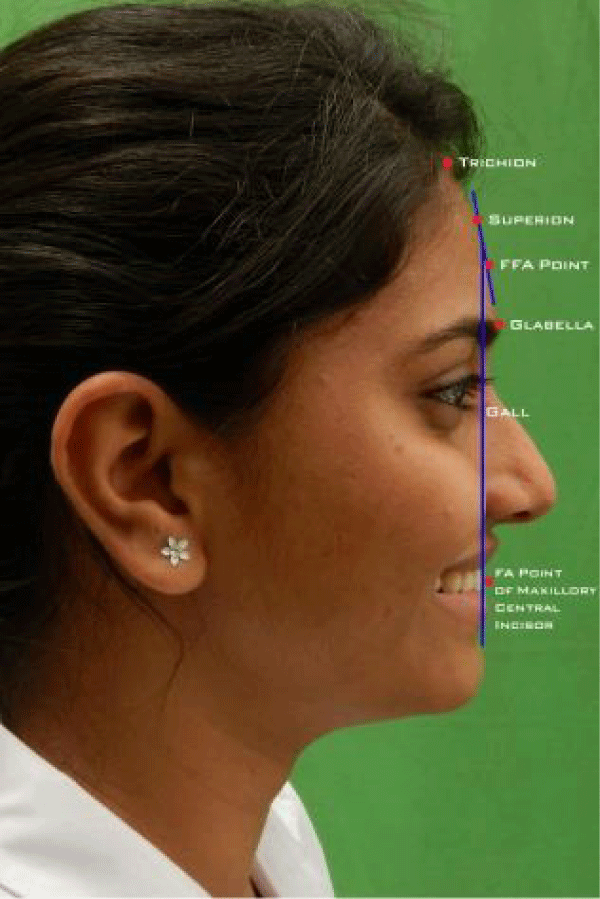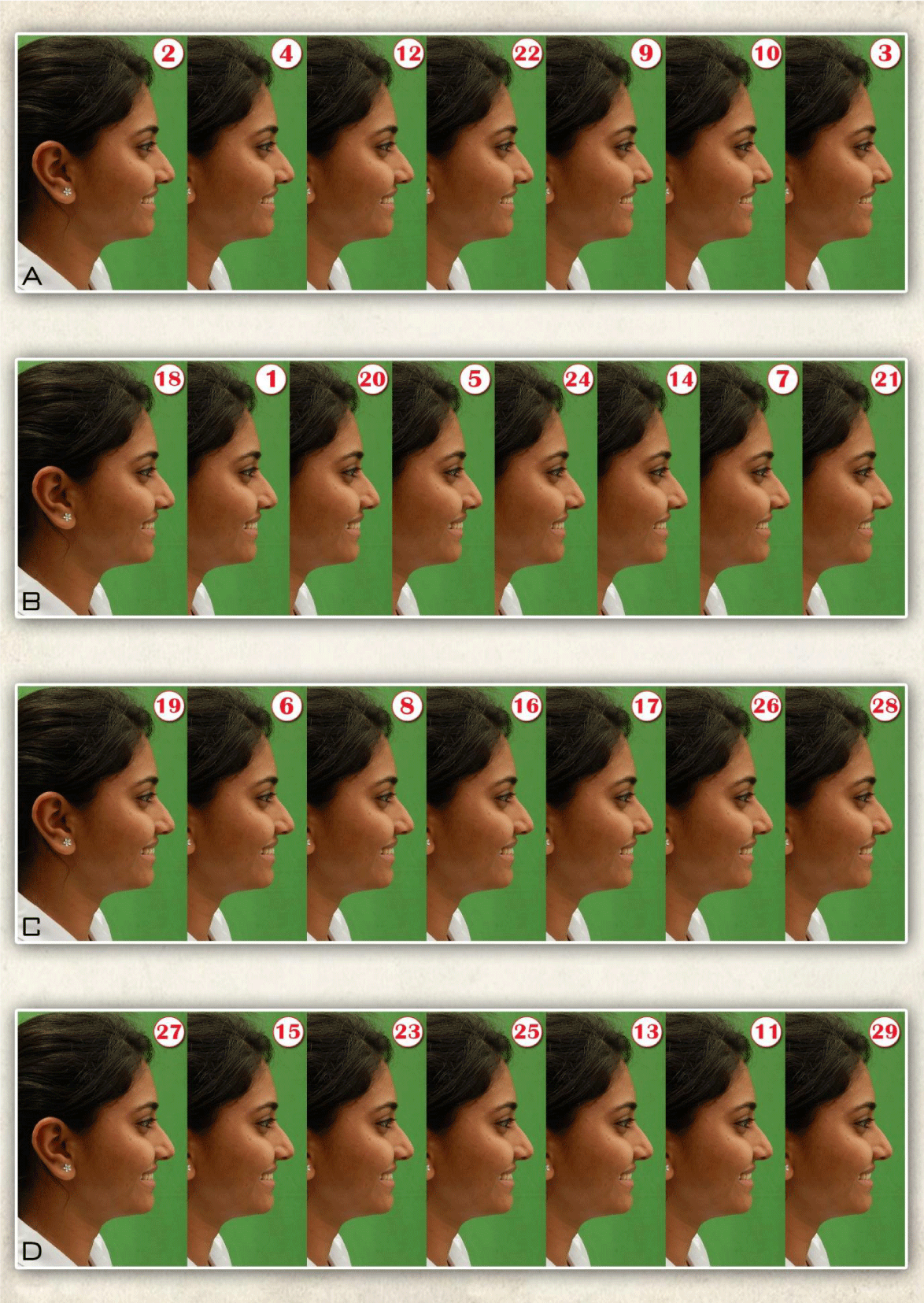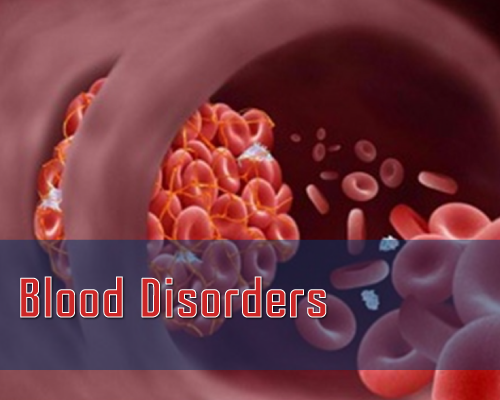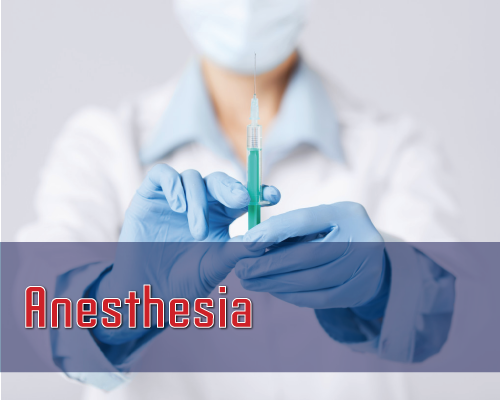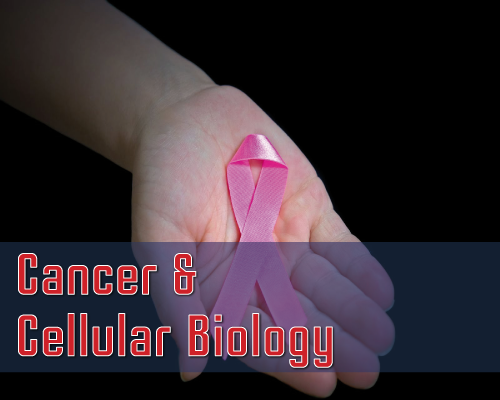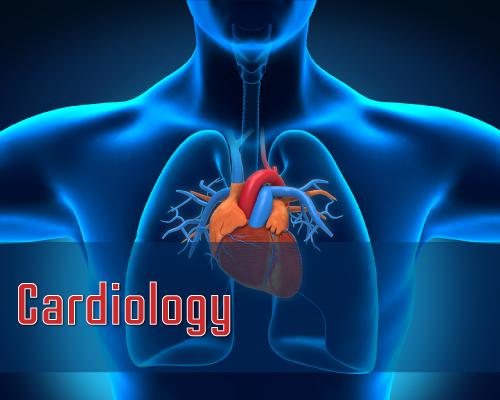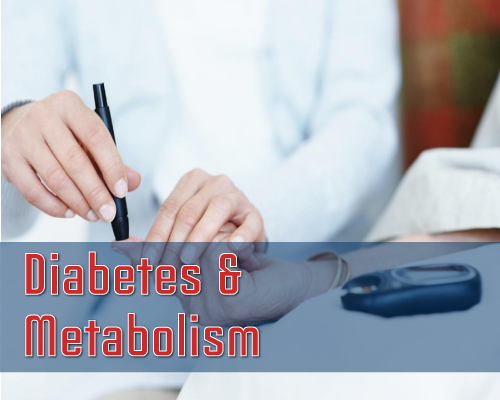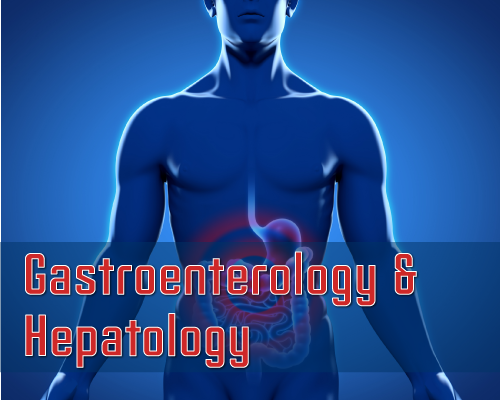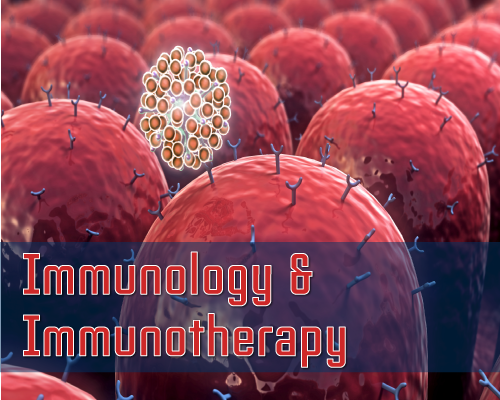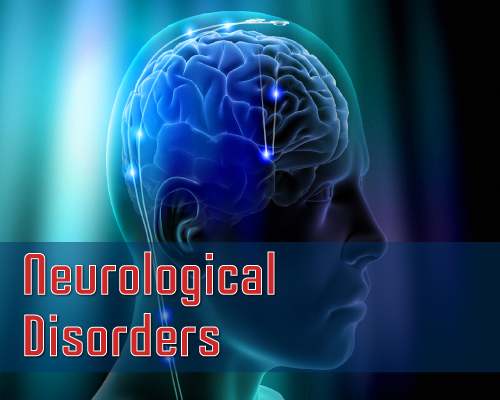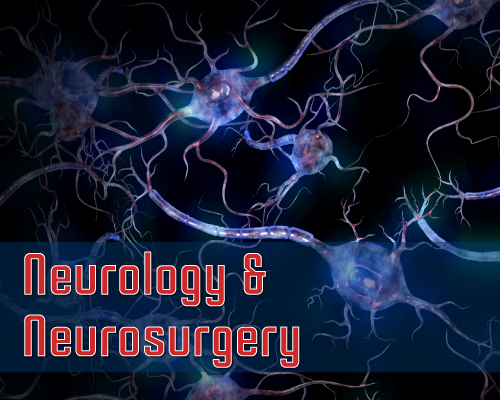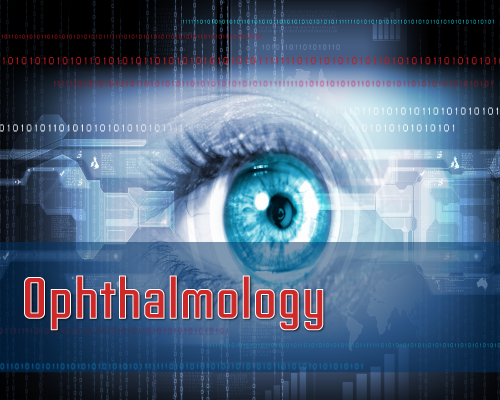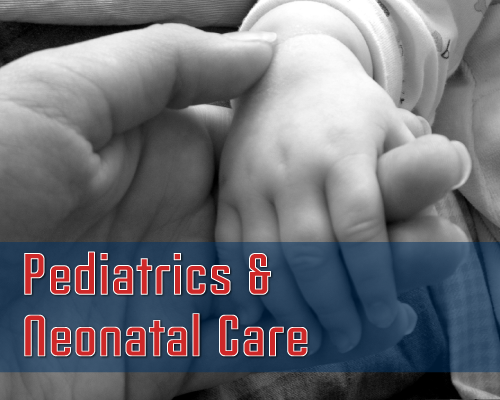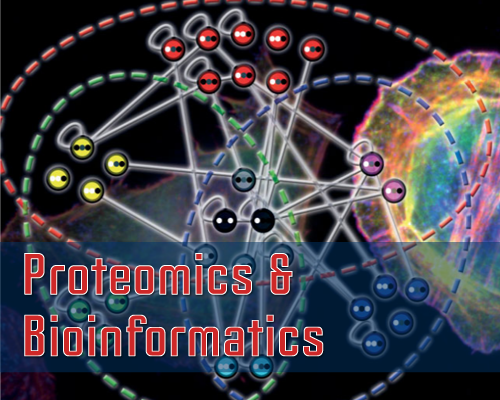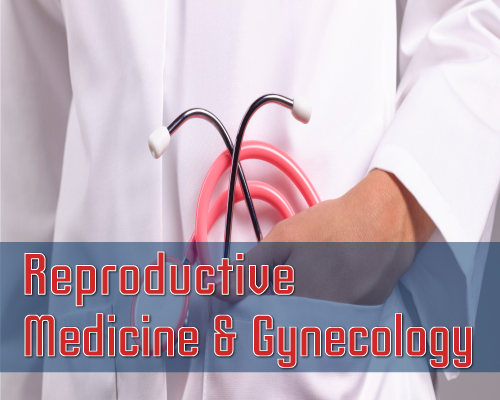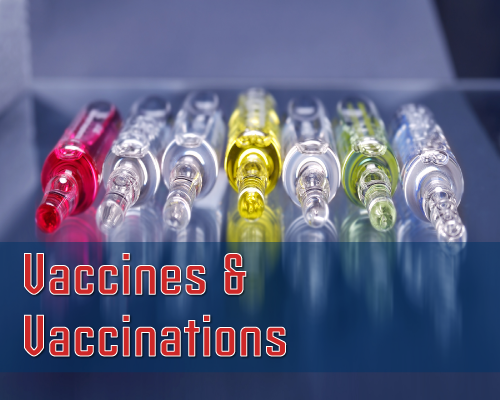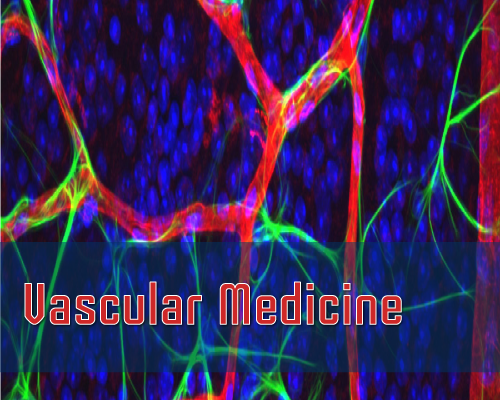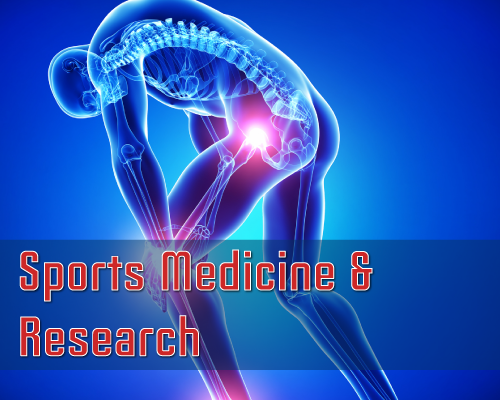Research Article
Evaluation of the Effect of Maxillary Incisor Labiolingual Inclination & Antero-Posterior Position on Smiling Profile Esthetics – A Computer Aided Photographic Study
Prathik Doshi, Ajit Kalia, Wasu Patil, Gaurav Gupta and Danish Intesaab Ahmed*
M.A. Rangoonwala College of Dental Sciences and Research Centre
*Address for Correspondence: Danish Intesaab Ahmed, 2390-B, K.B. Hidayatullah Road, Azam Campus, Pune, Maharashtra 411001, Tel: 9619539181; E-mail: [email protected]
Dates: 25 September 2017; Approved: 10 October 2017; Published: 14 October 2017
Citation this article: Doshi P, Kalia A, Patil W, Gupta G, Ahmed DI. Evaluation of the Effect of Maxillary Incisor Labiolingual Inclination & Antero-Posterior Position on Smiling Profile Esthetics – A Computer Aided Photographic Study. Sci J Res Dentistry. 2017;1(2): 043-049.
Copyright: © Ahmed DI, et al. This is an open access article distributed under the Creative Commons Attribution License, which permits unrestricted use, distribution, and reproduction in any medium, provided the original work is properly cited.
Abstract
Objectives: To test the null hypothesis that there was no effect of maxillary incisor labiolingual inclination and Anteroposterior (AP) position on smiling profile esthetics in young adult females.
Sample population: Subjects to be screened were young adult females from Indian population.
Subject and method: A total of 5 subjects were selected after screening Indian population for the study. A total of 145 images of 5 subjects were assessed by each member of professional and non-professional groups. Professional group consist of 10 orthodontists of age group 28-35 years & non-professional group consist of 10 laypersons of age group 28-35 years.
Results: the average ratings for overall images (all images combined) did not differ significantly between orthodontists and laypersons. (P-value > 0.05).The overall distribution of attractiveness significantly differs across various types of images (P-value < 0.001) Depending on rating received images were grouped as most attractive, attractive, interim attractive, relatively unattractive and unattractive.
Conclusion: This study concludes that there is an effect of maxillary incisor labiolingual inclination and Anterioposterior (AP) position on smiling profile esthetics in young adult females selected from Indian population.
Introduction
In persons with facial harmony, there is a correlation between the prominence and the inclination of the forehead and the Antero-Posterior (AP) positions of the teeth and jaws Maxillary incisor labiolingual inclination and Anteroposterior (AP) position have a key effect on the appearance of the smiling profile [1]. To improve the prediction of the most proper position of the maxillary incisors, many cephalometric and profilometric measurements have been suggested.
The maxillary incisors, when displayed, should be considered a part of the face both from the frontal and lateral perspectives. Contemporary orthodontic diagnosis includes assessing the display of the maxillary incisor teeth from the frontal perspective. In profile, however, the maxillary incisors are not typically assessed with regard to how they directly relate to the face. Instead, the soft tissue drape is relied on to reflect indirectly their positions, despite the potential unreliability of that method. Hence this study aimed to evaluate how the altered labiolingual inclination & Anterioposterior (AP) position of maxillary central incisor influence esthetics in young adult females.
Aim
The aim of this study was to evaluate the effect of maxillary incisor labiolingual inclination and Anterioposterior (AP) position on smiling profile esthetics in young adult females.
Objectives
To test the null hypothesis that there was no effect of maxillary incisor labiolingual inclination and Anteroposterior (AP) position on smiling profile esthetics in young adult females.
Materials and Methods
Equipments
• Digital HD X-ray machine (Advapex)
• Photographic camera Canon EOS 600 DSLR
• Dolphin imaging 10.5 software
• Tracing paper(lead acetate)
• 0.35mm pencil
• Protractor,scale,set square
• Noritsu QSS 3300i Digital, High Quality Printer and Processor
• Photoshop CS6 software
Methods
Source of data
Subjects to be screened were young adult females from Indian population.
Methods of collection of data
Sample size: A total of 5 subjects meeting the above criteria were selected after screening Indian population for the study. A total of 145 images of 5 subjects were assessed by each member of professional and non-professional groups. Professional group consist of 10 orthodontists of age group 28-35 years & non-professional group consist of 10 laypersons of age group 28-35 years.
Subject selection criteria: The subjects with following criteria were selected.
(1) Class I occlusion and Class I skeletal pattern.
(2) Hard tissue cephalometric analysis were in normal range.
(3) Soft tissue cephalometric analysis (including Ricketts’ esthetic plane, Merrifield’s z-angle, and measurements were within the normal range).
(4) Facial angle and H angle within the normal range, as described by Hold away, and Nasolabial angle and maxillary lip angle within the normal range, as described by Arnett and Bergman.
(5) Ideal maxillary incisor–to-forehead relationship, as described by Andrews and Andrews43 and maxillary central incisors’ Facial Axial Point (FA) on the Goal Anterior Limit Line (GALL).
Both hard & soft tissue analysis were done by using Dolphin imaging 10.5 software as well as manual tracing. (The subjects used for this study were provided the required dental treatment free of cost.)
Taking the Photographs
Right lateral profile photographs were taken for 5 patients with a digital camera under standard conditions by the same operator using a Canon EOS 600DSLR Camera having,18 Megapixels, image sensor 22.3X14.9mm,APS-C,CMOS type with maximum output resolution of 5184X3456, macro lens 18-55mm with image stabilizer, 0.25 meters oblique 8 feet, light sensitivity of 6400 ISO. The camera was mounted to a frame set at a fixed distance of 36 inches between the lens and the subject. The patient was then asked to bodily turn to their left and asked to sit on a stool looking at vertical mirror and thus having a right profile side facing the clinician. The head should be in Natural Head Position, with their eyes fixed horizontally. Natural Head Position recorded with the help of fluid level device.92 Light or Bright background, free of shadows and distractions was used. Before taking the smiling image, the photographer instructed the patient to “smile”. Social or forced smile of the patient was captured due to its reproducibility in the natural head position.
The first profile photo was taken with a natural facial expression, for use in the profilometric assessment. The second profile photo was taken with a full smiling expression with a small 100-mm ruler was fixed above the head of the subject on the facial sagittal plane. The second profile photo was used for subsequent computer-aided image alterations. All the photographs were taken during day time, at 11 a.m., IST.
Image alteration
The subject’s repeatable smiling profile photographs were altered with the Photoshop CS6 digital imaging program to obtain four series comprising 29 smiling profile photographs.
(A) The maxillary incisor labiolingual inclination was altered while FA will be kept unchanged on GALL, as the maxillary incisor was inclined labially by 50, 100, and 150 and lingually by 50, 100, and 150, respectively. There were seven images, including the original smiling profile photo, in the first series.
(B) The maxillary incisor was moved in a horizontal plane with the incisor AP position altered. The maxillary incisor was moved anteriorly by 1 mm, 2 mm, 3 mm, and 4 mm and posteriorly by 1 mm, 2 mm, 3 mm, and 4 mm, respectively. There were eight images in the second series. For retrusive simulations, the maxillary lip was moved at labrale superius at 1:2 to tooth movement; for protrusive simulations, the maxillary lip was moved at labrale superius at 1:3 to tooth movement.
(C) The smiling profile photo with maxillary incisor 2 mm anterior was altered. The maxillary incisor was inclined labially by 50, 100, and 150 and lingually by 50, 100, and 150, respectively, with FA 2 mm anterior to GALL. Another image was gained through alteration of the maxillary incisor labiolingual inclination with FA on GALL. There were seven images in the third series.
(D) The smiling profile photo with maxillary incisor 2 mm posterior was altered, just as in the third series. There were also seven images in the fourth series.
Image alteration was done by using photoshop CS6 digital imaging program. In that pen tool was used for cutting desired area then cropping selected area & rotating at specified inclinations to achieve desired alterations of inclinations.
For anterioposterior alterations, again using same tool desired area was cropped & did the protrusive & retrusive alterations in images.
Printing of the photographs
These digital images with 300 dpi resolution in JPEG format with a size of 10cm × 15cm (4 x 6 inch) were printed using Noritsu QSS 3300i Digital, High Quality Printer and Processor separately on Photo Quality Matte Paper with 180 GSM thickness.
Rating of photographs
A total of 20 judges (i.e. 10 Orthodontists, 10 Laypersons) received the profile photographs while seated and were asked to mark his or her assessments of the facial attractiveness of the subject on the 100 mm visual analogue scales, which were anchored by the descriptors “Least Attractive” (0) and “Most Attractive” (100). Visual analogue scales have been found to provide rapid, convenient, valid, reproducible, and representative ratings of dental and facial appearance. Each judge was asked to view each photograph for 30 seconds. The judges were given specific instructions on the use of the scale but no images with which to practice. No specific information was given regarding the faces they were to see. Each judge was asked to rate the attractiveness of the photographs on whatever criteria he or she deemed important and enter the ratings in evaluation sheet.
Data analysis
Descriptive statistical analysis was carried out in the present study to explore the distributions of ratings given by two groups of observers. Data on ratings (VAS) were presented with Mean and Standard Deviation across several types of images assessed. Higher mean ratings score indicated better appreciation and vice-versa for all the images.
Results
1) The average ratings for the images (image nos: 1, 3, 4, 6, 8, 9, 13, 15, 16, 19, 20, 23, 24, 25, 26, 27 and 28) is significantly different between two groups of Observers (P-value < 0.05 for all).
2) Orthodontists gave significantly higher ratings for the images (image nos: 1, 3, 6, 13, 15, 16, 19, 20, 23, and 26) compared to the Lay persons (P-value < 0.05 for all).
3) Lay persons gave significantly higher ratings for the images (image nos: 4, 8, 9, 24, 25, 27 and 28) compared to the Orthodontists (P-value < 0.05 for all).
4) The average ratings for the images (image nos: 2, 5, 7, 10, 11, 12, 14, 17, 18, 21, 22, and 29) did not differ significantly between two groups of Observers (P-value > 0.05 for all).
5) The average ratings for overall images (all images combined) did not differ significantly between two groups of Observers (Orthodontists Mean Ratings = 68.26 v/s Lay persons Mean Ratings = 68.00) (P-value > 0.05).
6) The overall distribution of attractiveness significantly differs across various types of images (P-value < 0.001).8).
7) The most attractive images being image no’s: 2, 16, 9, 10, 1 and 18 by both the groups of raters (>90.0% ratings as Most Attractive – Score >75.0).
8) The most unattractive images being image no’s: 7, 8, 21, 22, 23, and 29 by both the groups of raters (>75% ratings as Unattractive – Score < 60.0).
To Summarize
The average ratings for overall images (all images combined) did not differ significantly between orthodontists and laypersons. (P-value > 0.05). The overall distribution of attractiveness significantly differs across various types of images (P-value < 0.001) Depending on rating received images were grouped as most attractive, attractive, interim attractive, relatively unattractive and unattractive.
| Table 1: Images Alterations with Corresponding Image Codes. | |
| Image Code | Image Alterations |
| 1 | +2mm protrusion |
| 2 | Normal |
| 3 | -150 lingual |
| 4 | +50 labial |
| 5 | +4mm protrusion |
| 6 | +2mm protrusion, +100 labial |
| 7 | -3mm retrusion |
| 8 | +2mm protrusion, +150 labial |
| 9 | -5 0 lingual |
| 10 | -10 0 lingual |
| 11 | -2mm retrusion, -150 lingual |
| 12 | +100 labial |
| 13 | -2mm retrusion, -100 lingual |
| 14 | -2mm retrusion |
| 15 | -2mm retrusion, +100labial |
| 16 | +2mm protrusion, -50lingual |
| 17 | +2mm protrusion, -100 lingual |
| 18 | +1mm protrusion |
| 19 | +2mm protrusion, +5 0labial |
| 20 | +3mm protrusion |
| 21 | -4mm retrusion |
| 22 | +150 labial |
| 23 | -2mm retrusion, +150 labial |
| 24 | -1mm retrusion |
| 25 | -2mm retrusion, -50 lingual |
| 26 | +2mm protrusion, -150 lingual |
| 27 | -2mm retrusion, +50 labial |
| 28 | +2mm protrusion FA on GALL |
| 29 | -2mm retrusion FA on GALL |
Discussion
Most patients seek orthodontist mainly for two reasons, first is the presence of any facial deformity or disharmony and the second is malalignment of teeth, and sometimes even both.
Edward J. Foster [2], had conducted a similar study to find out the common basis for judging the facial beauty. His study concluded that the diversified groups from the study do seem to share a common esthetic standard for the posture of lips in protruded cases. Also, fuller lips were more accepted in case of younger ages by the groups. For adult males, all groups but orthodontists preferred lips located back of the stated mean values for the E and H line. A straighter male profile was preferred as compared to 3mm fuller profile for females was accepted by most of the groups.
Sarver and Ackerman [3] stated while enlightening the re-emergence of esthetic paradigm that, extending the soft tissue envelope by expanding dental arches to increase hard tissue support for the lips and cheeks or enlarging the facial skeleton surgically to increase hard tissue support, usually is more esthetic than the reverse, especially when the effects of aging are considered. Greater soft tissue fullness gives a more youthful appearance.
Table 2: The descriptive statistics of ratings (appreciation scores) across all the images assessed by the observers (Orthodontists and Lay persons combined). |
|||||
| Image ID | No.of images | Mean | Std.Deviation | Minimum | Maximum |
| 1 | 100 | 79.00 | 4.266 | 73 | 89 |
| 2 | 100 | 83.55 | 4.074 | 76 | 93 |
| 3 | 100 | 70.05 | 2.801 | 64 | 77 |
| 4 | 100 | 73.02 | 3.156 | 70 | 83 |
| 5 | 100 | 62.87 | 3.786 | 57 | 72 |
| 6 | 100 | 66.77 | 3.478 | 59 | 75 |
| 7 | 100 | 57.00 | 5.980 | 50 | 72 |
| 8 | 100 | 57.76 | 6.641 | 48 | 73 |
| 9 | 100 | 82.54 | 5.340 | 74 | 94 |
| 10 | 100 | 78.41 | 3.755 | 72 | 86 |
| 11 | 100 | 64.43 | 4.038 | 51 | 74 |
| 12 | 100 | 65.41 | 4.757 | 51 | 75 |
| 13 | 100 | 66.71 | 3.026 | 60 | 74 |
| 14 | 100 | 64.66 | 3.707 | 60 | 74 |
| 15 | 100 | 64.74 | 5.038 | 51 | 75 |
| 16 | 100 | 83.58 | 4.789 | 75 | 95 |
| 17 | 100 | 75.15 | 2.683 | 73 | 83 |
| 18 | 100 | 77.31 | 3.678 | 72 | 86 |
| 19 | 100 | 74.34 | 3.669 | 70 | 84 |
| 20 | 100 | 69.83 | 3.785 | 63 | 79 |
| 21 | 100 | 51.16 | 6.527 | 41 | 67 |
| 22 | 100 | 54.43 | 6.114 | 47 | 70 |
| 23 | 100 | 56.91 | 7.088 | 47 | 73 |
| 24 | 100 | 67.74 | 3.889 | 58 | 77 |
| 25 | 100 | 75.04 | 3.256 | 71 | 84 |
| 26 | 100 | 65.56 | 3.115 | 58 | 73 |
| 27 | 100 | 70.45 | 3.151 | 63 | 79 |
| 28 | 100 | 66.09 | 2.927 | 59 | 74 |
| 29 | 100 | 51.32 | 6.760 | 41 | 67 |
| Overall | 2900 | 68.13 | 10.088 | 41 | 95 |
Higher the mean score better the appreciation and vice-versa. |
|||||
| Table 3: The distribution of overall attractiveness status of all assessments performed for each image (combined ratings by Orthodontists and Lay persons). | ||||||
| Image ID | Most Attractive (>75) | Attractive (70 to 75) | Interim Attractive (65 to 70) | Relatively unattractive (60 to 65) | Unattractive (<60) | Total |
| 1 | 93 | 7 | 0 | 0 | 0 | 100 |
| 2 | 100 | 0 | 0 | 0 | 0 | 100 |
| 3 | 12 | 33 | 54 | 1 | 0 | 100 |
| 4 | 23 | 77 | 0 | 0 | 0 | 100 |
| 5 | 0 | 10 | 14 | 62 | 14 | 100 |
| 6 | 4 | 16 | 62 | 17 | 1 | 100 |
| 7 | 0 | 9 | 6 | 3 | 82 | 100 |
| 8 | 0 | 10 | 11 | 12 | 67 | 100 |
| 9 | 98 | 2 | 0 | 0 | 0 | 100 |
| 10 | 94 | 6 | 0 | 0 | 0 | 100 |
| 11 | 0 | 15 | 15 | 66 | 4 | 100 |
| 12 | 1 | 18 | 27 | 51 | 3 | 100 |
| 13 | 0 | 17 | 66 | 17 | 0 | 100 |
| 14 | 0 | 15 | 24 | 61 | 0 | 100 |
| 15 | 2 | 19 | 25 | 45 | 9 | 100 |
| 16 | 100 | 0 | 0 | 0 | 0 | 100 |
| 17 | 32 | 68 | 0 | 0 | 0 | 100 |
| 18 | 91 | 9 | 0 | 0 | 0 | 100 |
| 19 | 44 | 56 | 0 | 0 | 0 | 100 |
| 20 | 11 | 38 | 47 | 4 | 0 | 100 |
| 21 | 0 | 0 | 11 | 2 | 87 | 100 |
| 22 | 0 | 1 | 8 | 9 | 82 | 100 |
| 23 | 0 | 8 | 12 | 15 | 65 | 100 |
| 24 | 7 | 26 | 51 | 14 | 2 | 100 |
| 25 | 46 | 54 | 0 | 0 | 0 | 100 |
| 26 | 0 | 11 | 61 | 26 | 2 | 100 |
| 27 | 14 | 48 | 34 | 4 | 0 | 100 |
| 28 | 0 | 16 | 61 | 22 | 1 | 100 |
| 29 | 0 | 0 | 13 | 1 | 86 | 100 |
| Values are no. of ratings (n) out of 100 ratings by both Orthodontists and Lay persons. | ||||||
| Table 4: The distribution of group of images with respect to the overall attractiveness status (combined ratings by Orthodontists and Lay persons). | |||
| Group code | Image Numbers (Group) | Overall Attractive Status | Ratings Received |
| A | 1, 2, 9, 10, 16, 18 | Most Attractive | >75 |
| B | 4, 17, 19, 25, 27 | Attractive | 70 to 75 |
| E | 3, 6, 13, 20, 24, 26, 28 | Interim Attractive | 65 to 70 |
| C | 5, 11, 12, 14, 15 | Relatively Unattractive | 60 to 65 |
| D | 7, 8, 21, 22, 23, 29 | Unattractive | <60 |
| Image no’s 15, 20 and 27 had <45% borderline preference in the respective overall attractive group. | |||
This study was done on subjects selected from Indian population, the subject used for photographic alteration exhibited excellent adherence to the accepted hard and soft tissue normative values, and the crown axial line of her central incisors was on GALL that is ideal maxillary incisor-to-forehead relationship, as described by Andrews and Andrews [4].
Harmonious Smiling Profiles
The average scores of the relatively attractive group, Group A were all greater than 75, including numbers (Image codes) 9, 2, 16, 18, 1, and 10. The smiling profile with the highest score was the one with incisors with 50 of lingual inclination with FA on GALL (Image Code 9). The average scores of the acceptable group, Group B, were all greater than 70, including numbers 19, 4, 17, 27 and 25. The harmonious smiling profiles above indicated that proper protrusion of maxillary incisors (FA a head of GALL within 2 mm) would not damage the esthetics of the smiling profile if the incisors were upright. Maxillary incisor lingual inclination (within 100) and a small degree of labial inclination were considered relatively esthetic as well.
Unharmonious Smiling Profiles
The average scores of the unattractive group, Group 1, were all less than or equal to 60, including numbers 21, 29, 22, 23, 7, and 8. The smiling profile with the lowest score was the one with incisors in 4 mm of retrusion (Image Code 21). The average scores of the relatively unattractive group, Group 2, were all lower than 65, including numbers 5, 11, 15, 14, and 12. The rest of the images belonged to the interim group, Group 3, for which the average score ranged between 65 and 70.
Those unharmonious smiling profiles above indicated that maxillary incisor retrusion of more than 1 mm would damage the smiling profile esthetics even if the incisors were upright. However, protrusion of less than 3 mm or less did not affect the smiling esthetics. All of the images showing 150 labial inclination of the upper incisors were considered less attractive without exception, while the ones with 100 lingual inclination were considered relatively esthetic. It was not difficult to draw the conclusion that maxillary incisor lingual inclination and protrusion were more acceptable than incisor labial inclination or retrusion.
In our study the subject met the requirement of the relationship between the maxillary incisors and the forehead, as described in Element II of the six elements of orofacial harmony. Forehead was used as a landmark for assessing the AP position of the maxillary central incisors in smiling profile. The original photo had received a relatively high score, which caused us to think that the subject’s smiling profile was esthetic. Both images 29 (maxillary teeth in 2 mm of retrusion, with FA unchanged) and 28 (maxillary teeth in 2 mm of protrusion, with FA unchanged) did not belong to the relatively attractive or acceptable group, even though FA of the incisors was still on GALL.
On the other hand, incisor protrusion of less than 3 mm did not affect the smiling esthetics. This finding indicates that although the AP position of the incisors was important to the facial harmony, a small amount of the anterior movement of the maxillary incisors would not damage the smiling profile esthetics. However, improper labiolingual inclination of the upper incisors could easily ruin the pleasing appearance. Of all the factors related to a balanced smiling profile, one can easily be controlled by orthodontists— the labiolingual inclination of the maxillary incisors.
The expression of the incisor labiolingual inclination was influenced by various factors. However, most reports published on this issue indicate a loss of torque control of as high as 100% of the prescribed value. Based on the available evidence, Gioka and Eliades [5], suggested that a high-torque prescription should be selected to account for the lack of full expression of the prescribed torque that occurs clinically. However, Isıksal et al. found that although the inclination values of the maxillary incisors were statistically different between extraction and nonextraction groups, the difference did not affect smiling esthetics in either group.
Furthermore, increasing the labial inclination would cause smiling esthetics to deteriorate. The use of a high torque bracket system, particularly in nonextraction treatment with anterior crowding, when initial tooth torques are close to the desired angles, would be inappropriate. Increased maxillary incisor labial inclination might also flatten the smile arc and reduce incisor display, which would lead to negative esthetic consequences [6,7]. Our study corroborates these findings of others. Without exception, all of the images with 150 labial inclination of the upper incisors were considered less attractive.
When it comes to the AP position of the maxillary incisors, the ratings also showed us that the raters had some tendency with regard to smiling profile esthetics. The attractiveness of the images was reduced with the increase in maxillary incisor retrusion. All the images with 2 mm retrusion were considered unattractive, in spite of the different labiolingual inclinations. Only one image with slight lingual inclination was acceptable. Many other studies also found that the fuller smile was more attractive [8].
Schlosser et al [9]. Evaluated the effect of maxillary incisor AP relationship on smiling profile and found that the protrusion of the upper anterior teeth was more attractive than that of the retruded ones from an esthetic standpoint. This finding was consistent with that of our investigation. Thus, it is preferable to leave a normally protrusive maxillary dentition where it is, or else it is preferable to advance it rather than to retract the maxillary anterior teeth.
Furthermore, each individual is a unique entity. When making treatment plans, it is essential that practitioners aim not only to achieve a normative dentofacial index, but also to consider the objective of obtaining a balanced smiling profile. The jaw size, the original labiolingual inclination of the maxillary anterior teeth, the AP position, and the soft tissue should be evaluated cautiously. Those patients with a Class III face type should be taken much more seriously in terms of increasing the maxillary incisor labial inclination to compensate for the underdevelopment of the maxilla and the upper alveolar bone, because the small amount of labial inclination increase of the upper incisors would have great negative influence on the attractiveness of the smiling profile.
There were some limitations in this study that should be recognized. Although the study had digitally generated profile images altered from ideal profile based on the cephalometric norms from established researchers, it should be taken into consideration that sample size was small compared to entire indian population size. In this study, panel of evaluaters of orthodontists and laypersons may not be representative of the entire population. Also study was of only female population only and there was variation in ethanic as well as on regional basis in Indian population. Lastly images used in study were 2D images of 3D subject.
Conclusion
This study concludes that there is an effect of maxillary incisor labiolingual inclination and Anterioposterior (AP) position on smiling profile esthetics in young adult females selected from Indian population. This meansElement II of Andrews and Andrews six elements of orofacial harmony is a useful reference to the smiling profile esthetics in young adult women for Indian population also. A maxillary incisor that is upright or in slight lingual inclination is preferable, in spite of the AP position of the maxillary incisors. Labial inclination of the upper incisors could easily ruin a pleasing smiling appearance. Maxillary incisor protrusion is preferable to retruded incisors.
References
- Arnett GW, Bergman RT. Facial keys to orthodontic diagnosis and treatment planning, part I. Am J Orthod Dentofacial Orthop. 1993; 103: 299–312. https://goo.gl/uWeyVp
- Foster EJ. Profile preferences among diversified groups. Angle Orthodontist 1973; 43: 34-40. https://goo.gl/ASLCCe
- Sarver MD and Ackerman LJ. Orthodontics about face: The re-emergence of the esthetic paradigm. Am J Orthod Dentofacial Orthop. 2000; 117: 575-76. https://goo.gl/Sw2U65
- Andrews LF, Andrews WA. Syllabus of the Andrews orthodontic philosophy. 9th ed. San Diego: Lawrence F. Andrews; 2001. https://goo.gl/3jSmjN
- Gioka C, Eliades T. Materials-induced variation in the torque expression of preadjusted appliances. Am J Orthod Dentofacial Orthop. 2004; 125: 323-328. https://goo.gl/b4Lp7X
- Cordato M. Variation in torque expression. Am J Orthod Dentofacial Orthop. 2004; 126: 18A. https://goo.gl/femgMX
- Sarver DM. The importance of incisor positioning in the esthetic smile: the smile arc. Am J Orthod Dentofacial Orthop. 2001; 120: 98-111. https://goo.gl/VrSL6u
- Miner RM, Anderson NK, Evans CA, et al. The perception of children’s computer-imaged facial profiles by patients, mothers and clinicians. Angle Orthodontist 2007; 77: 1034-1039. https://goo.gl/CQPFM8
- Jonathan B. Schlosser, C. Brian Preston, and Judith Lampasso. The effects of computer-aided anteroposterior maxillary incisor movement on ratings of facial attractiveness. Am J Orthod Dentofacial Orthop. 2005; 127: 17-24. https://goo.gl/2WHLYu
Authors submit all Proposals and manuscripts via Electronic Form!


